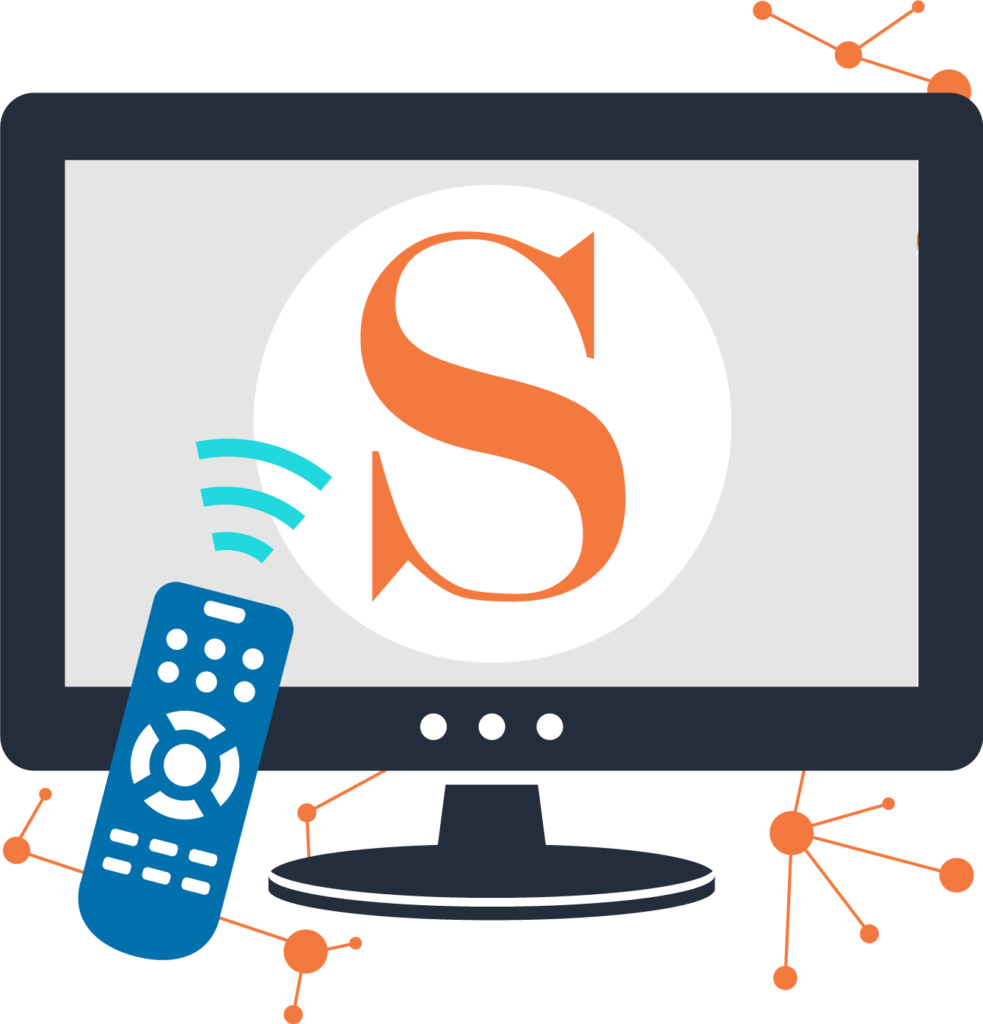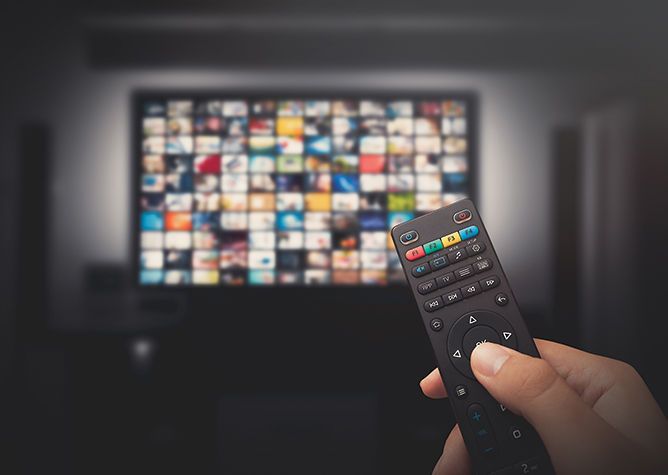
The future of video advertising is here today.
Not everyone watches TV in the traditional way anymore. Nowadays, more people than ever catch their shows on a television connected to the internet. Whether it’s a Smart TV, a streaming device like Roku, or even a gaming console, this new wave of entertainment is already changing video advertising.
At Stream Companies, we want to help you harness Connected TV (CTV) as an advertising channel. See how we can put you at a competitive advantage in a more connected world!
Your cheat sheet to CTV terminology
As the Connected TV advertising field has expanded, the marketing terminology has ballooned right alongside it. You’ll want to know the terms below to have more productive discussions about your CTV advertising campaigns.
More than just Smart TVs: CTV devices
Your introduction to CTV may have been through a Smart TV, but that’s not the only way to stream Connected TV content. Consumers commonly use these devices:
- Tablets, phones, and desktops. Yes, the same devices that first connected you to the internet are, unsurprisingly, popular sources for streaming CTV content. You don’t need a full-size television to watch TV anymore, as the mini-TV in your pocket will do just fine.
- OTT/CTV devices. These devices connect to TVs so users can stream content continuously and start watching before the content is fully downloaded. They include Roku, Chromecast, Apple TV, and Amazon Fire Stick, as well as major gaming consoles.
- Smart TVs. Most big-screen TVs these days are Smart TVs, so they connect to the internet without a need for the devices listed above.
How does video advertising on CTV work?
CTV is a channel for Over-the-Top (OTT) video content. This content comes to viewers via the internet without multi-system operator involvement, as you would see with traditional television. The popular content providers of today and tomorrow—Netflix, Hulu, and Amazon included—use a CTV model.
Despite the fact that CTV users are watching shows over the internet and not through a TV station, the experience is remarkably similar to traditional TV. Its users are willing to watch all manner of ad content to start (or continue) watching their shows.
How does this affect your advertising? More audiences than ever are getting their television fix via CTV. As it stands, CTV is at 84% saturation in U.S. markets—and the Millennial generation is one of CTV’s biggest fans!

What metrics do we measure for CTV advertising?
When new forms of digital advertising arise, so too do new methods of measuring success in their domains. The most common metrics to pay attention to in CTV advertising include:
Impressions. The impression metric is the number of single ads that were served to a user. Remember, an ad does not have to be clicked for it to count as an impression. As long as it is on the page and visible to the user (even if the user does not actually see it), it’s an impression.
As you might imagine, this makes impressions an important metric but far from the only one you want to account for. Impressions are calculated after the first frame rate of the start of a video.
Reach. How many households or unique individuals are exposed to your CTV advertisement? The answer to that question is your reach. Maybe you delivered 500,000 ad impressions, but that doesn’t mean 500,000 people saw your advertisement. Reach is how we measure that.
Frequency. Divide the total number of impressions of the ad by the reach—the number of unique individuals or households who saw it—and you will have the frequency. This metric is an average: The average number of times you’re delivering a CTV advertisement to a given household.
So, if you deliver 4,000 ad impressions to 2,000 households, then you have a frequency of two.
Connected TV appeals to so many marketers and businesses because you can impose frequency caps. In practice, this means you can reach your target audience without annoying them by showing them the same ad over and over in a row.
Video completion rate. The percentage of impressions that reached the completion of the ad is your video completion rate or VCR. Completion rates for CTV advertising are very high—typically well above 90%.
Gross rating point. How many people in your target audience saw your ad? The gross rating point or GRP can clue you in to the answer. Multiply your reach percentage by your average frequency number by 100 to find it.
Cost per point. You want to know how well your ads are reaching your desired audience—especially when it comes to advertising costs. Cost per point or CPP allows you to factor price into the equation.
Divide your total media cost by your GRP (explained above), and you’ll know what you are paying per GRP. This is your cost per point.
View-through conversions. For marketing attribution, tracking conversions is essential. View-through conversions are one way to do that. They happen when a user sees your ad and does not interact with it but later goes on to convert.
On-target percentage. Let’s say you have a target demographic of males aged 18–32 and a goal for them to sign up their email for a newsletter. Your on-target percentage or OTP measures how much of your campaign’s results came from that demographic, so you can see just how on-target you were.

Why Stream for Connected TV advertising?
At Stream, we deliver quality content to users when and where they spend the most time. That extends to the realm of Connected TV, where we run campaigns that we actively optimize every day.
There’s virtually no waste because we do 95% of campaigns at the zip code level. We only reach people within the geography responsible for the most sales with our CTV advertising content. And we place our ads where users find themselves most, whether it’s news sites, online retailers, blogs, or anywhere else.
We’re invested in your brand safety, too. The chance for fraud and false impressions is slim. Every few months, we run a random audit for all our campaigns. Lately, we’ve seen non-human traffic at a super-low fraud rate of 0.5%—in an industry where 15% is the norm!
Live Metal: Your Amazon advertising strategy
More users than ever are choosing Amazon Prime Video as their CTV medium. We have an innovative way for you to reach your customers there with a more dynamic campaign.
Choose our Live Metal offering and talk to them with CTV advertising as well as display and digital video advertising. Have your brand seen on one of the most popular e-commerce and digital streaming platforms around with a three-pronged strategy for success.
Now streaming: The TV advertising wave of the future
Research has shown that video content is one of the most effective forms of advertising. Of course, you need your video ads to be seen to capture the interest of consumers. Why not dip into the space where your most coveted demographics will hear your message?
Discover how Connected TV advertising works with the team at Stream Companies. We’ll help develop a savvy campaign that can reach the modern TV watcher! Contact us today.
